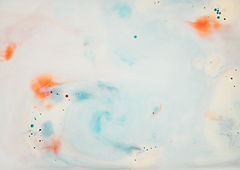


Weekend Sale! Get up to 20% off and free shipping on Herbal Makeup Products, use code HOLIDAY20

Unveiling the Culprits Among Makeup Products: What Makeup Products cause Acne?
Dec 27, 2023
3 min read
0
3
Introduction
In the pursuit of flawless skin, makeup has become an essential tool for many. However, for those with acne-prone skin, navigating the world of cosmetics can be a daunting task. The question often arises: What makeup products cause acne? In this comprehensive guide, we will explore the makeup products that may contribute to acne-prone skin, understand the ingredients that can trigger breakouts, and provide tips on choosing acne-friendly makeup alternatives.

Understanding Acne-Prone Skin
1. What Sets Apart Acne-Prone Skin?
a. The Characteristics of Acne-Prone Skin
An increased susceptibility to breakouts, pimples, and inflammation characterizes acne-prone skin. Individuals with this skin type often experience clogged pores, excess oil production, and a heightened sensitivity to certain ingredients, making it crucial to choose makeup products carefully.
b. Triggers and Factors: Unveiling the Culprits
Various factors contribute to acne-prone skin, including hormonal fluctuations, genetics, and lifestyle choices. Additionally, the use of certain makeup products can exacerbate existing acne or trigger new breakouts.
Makeup Products and Acne: Identifying the Culprits
1. Comedogenic Ingredients: A Risk for Acne-Prone Skin
a. Understanding Comedogenicity: What to Watch Out For
Comedogenic ingredients are substances that have a high likelihood of clogging pores. For individuals with acne-prone skin, these ingredients can be particularly problematic. Common culprits include certain oils, waxes, and emollients in makeup formulations.
b. Choosing Non-Comedogenic Makeup Products
To avoid exacerbating acne-prone skin, opt for makeup products labeled as non-comedogenic. These products are formulated to minimize the risk of clogged pores, providing a safer option for those susceptible to breakouts.
2. Heavy Foundations: A Burden on Acne-Prone Skin
a. The Weight of Full-Coverage Foundations
While full-coverage foundations are praised for concealing imperfections, they can be heavy on the skin, potentially leading to pore blockages. For those with acne-prone skin, the use of thick foundations may contribute to the development of new blemishes.
b. Lightweight Alternatives: Balancing Coverage and Breathability
Consider opting for lightweight, breathable foundations. These formulations provide coverage without suffocating the skin, reducing the risk of pore congestion and allowing the skin to breathe.
3. Cream-Based Products: A Double-Edged Sword
a. Cream Blushes and Highlighters: A Potential Risk
Cream-based blushes and highlighters, while adding a dewy finish, can pose a risk for acne-prone skin. The emollient nature of these products may contribute to excess oil on the skin, potentially leading to clogged pores and breakouts.
b. Powder Formulations: A Safer Choice
For those prone to acne, powder formulations can be a safer alternative. Powder blushes and highlighters provide a matte finish without the heavy emollients found in cream-based products.
4. Oil-Based Products: A Slippery Slope for Acne-Prone Skin
a. Choosing Wisely: Oils in Makeup Formulas
While some oils can benefit the skin, certain oil-based makeup products may be problematic for acne-prone individuals. It's essential to be discerning about the types of oils used in makeup formulations to avoid exacerbating breakouts.
b. Oil-Free Makeup Options: Minimizing Risks
To mitigate the risk of breakouts, consider using oil-free makeup options. These formulations provide a smoother application without adding unnecessary oils to the skin, offering a safer choice for acne-prone individuals.
Tips for Choosing Makeup for Acne-Prone Skin
1. Read Ingredient Lists: Knowledge is Power
a. The Importance of Ingredient Awareness
Become familiar with common acne-triggering ingredients. Reading the ingredient list on makeup products can empower you to make informed choices and avoid substances that may aggravate your skin.
2. Patch Testing: A Crucial Step
a. Patch Testing New Products: A Preventive Measure
Before incorporating a new makeup product into your routine, conduct a patch test. Apply a small amount of the product to a discreet area of your skin to assess for any adverse reactions before using it on your face.
3. Consulting with Dermatologists: Expert Guidance
a. The Role of Dermatologists in Skincare
If you have acne-prone skin, consider seeking advice from a dermatologist. They can provide personalized recommendations and help you identify makeup products that align with your skincare goals.
Conclusion
While makeup is a powerful tool for enhancing beauty and boosting confidence, it's crucial to be mindful of the specific needs of acne-prone skin. Understanding what makeup products cause acne-prone skin to react is the first step toward making informed choices. By choosing non-comedogenic, lightweight, powder formulations, and oil-free options, individuals with acne-prone skin can enjoy the transformative power of makeup without compromising the health of their skin. Remember, acne-friendly makeup choices contribute to both beauty and skincare, allowing you to put your best face forward with confidence.







